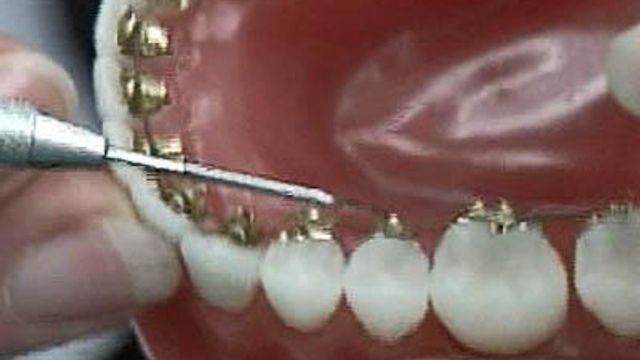Smile! There's a Way to Hide Braces
The idea of placing braces behind the teeth is not new, but it has not been very popular until recently.
Posted — UpdatedNaomi Hammeke spent most of her life ignoring a problem with her teeth.
"I think just in the last couple of years, it started to bother me about my overbite," she said.
Hammeke asked Dr. Rose Sheats, an orthodontist at the University of North Carolina at Chapel Hill, for the most unobtrusive solution possible. The idea of placing braces behind the teeth isn't new, but it has not been very popular until recently when a German orthodontist improved them.
Each bracket is customized and molded to each tooth.
The brackets also take up less critical room inside. Sheats said the most uncomfortable area for patients is the tongue.
Hammeke said she sometimes has trouble saying words with a T. UNC is studying the adjustments patients have to make and how long it takes before the discomfort, speech or eating problems go away.
Sheats said patients with braces on the outside of the teeth face the same issues. The difference is Hammeke can work through it without a steely smile. She said she already noticed a difference since they were attached in the summer.
"My overbite is less pronounced, but there's still a way to go," Hammeke said.
Sheats said the newer type of lingual braces are also easier for practitioners to work with than the older type.
• Credits
Copyright 2024 by Capitol Broadcasting Company. All rights reserved. This material may not be published, broadcast, rewritten or redistributed.





